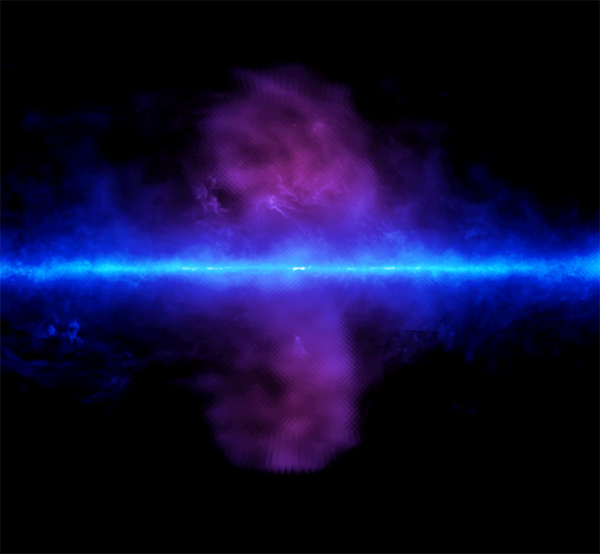Fermi Bubbles

In 2010, gamma-ray observations by Fermi revealed previously unknown features in our galaxy that stretch halfway across the sky. Now called the Fermi Bubbles, these mysterious structures (magenta in the image above) emerge above and below the center of our galaxy, spanning a total length of about 50,000 light-years.
The plane of our galaxy (shown in blue above) glows brightly in gamma rays, which result when high-energy particles called cosmic rays interact with gas and dust. The Fermi Bubbles emit higher-energy gamma rays than the rest of the galaxy's disk. (In the interactive, clicking on the Gamma-ray Catalog button changes the background to an all-sky view of this so-called diffuse emission.)
The bubbles may be related to the release of vast amounts of energy emitted from the supermassive black hole at the center of our Milky Way galaxy. We know that in other galaxies, supermassive black holes that ingest large amounts of matter can power high-energy jets. It's possible the Milky Way's central black hole went through such a phase in the past, producing jets responsible for the Fermi Bubbles we see today.
A completely unexpected discovery like the Fermi Bubbles is a special treat. However, scientists know that there are many more surprises waiting to be uncovered by Fermi. In the most recent catalog of sources from Fermi's Large Area Telescope, fully a third of detected source positions are not known to have a gamma-ray emitting object at that location. What could be producing these gamma rays?
That's the question many scientists are hoping to answer as Fermi continues its mission.